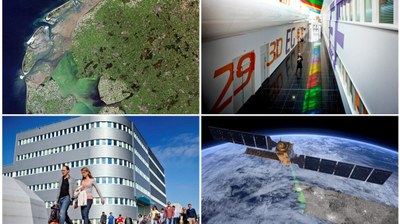Copernicus: Europe’s revolutionary Earth observation
Copernicus: what and why?
The more we know about the environment, the better we understand our planet and the changing climate. What is even more important is knowing how these changes impact our daily lives. Copernicus is a European programme that monitors our Earth. It gathers reliable and up-to-date information from a complex set of systems such as satellites and in situ components such as earth stations, air and sea sensors. This data is processed and provides valuable information on how much percentage of the Earth's surface is being used, on the evolution of vegetation and the water cycle, but also collects information on wind speeds and waves for navigation.
Purpose of the Copernicus programme
The aim of the programme is to:
- streamline European earth observation,
- assist in the decision-making process of public and private bodies in Europe,
- support research.
In this way, Copernicus provides a great deal of useful information for, inter alia, forest management and land use planning in Europe.
Copernicus in Europe

The European Commission coordinates and manages the Copernicus programme. The European Space Agency is in charge of the observation infrastructure. The European Environment Agency is responsible for managing the in situ components such as earth stations.
Project partners
European Commission, European Space Agency, EUMETSAT, ECMWF, EEA, Mercator Océan, EU SatCen, EMSA (European Maritime Safety Agency), Frontex.



